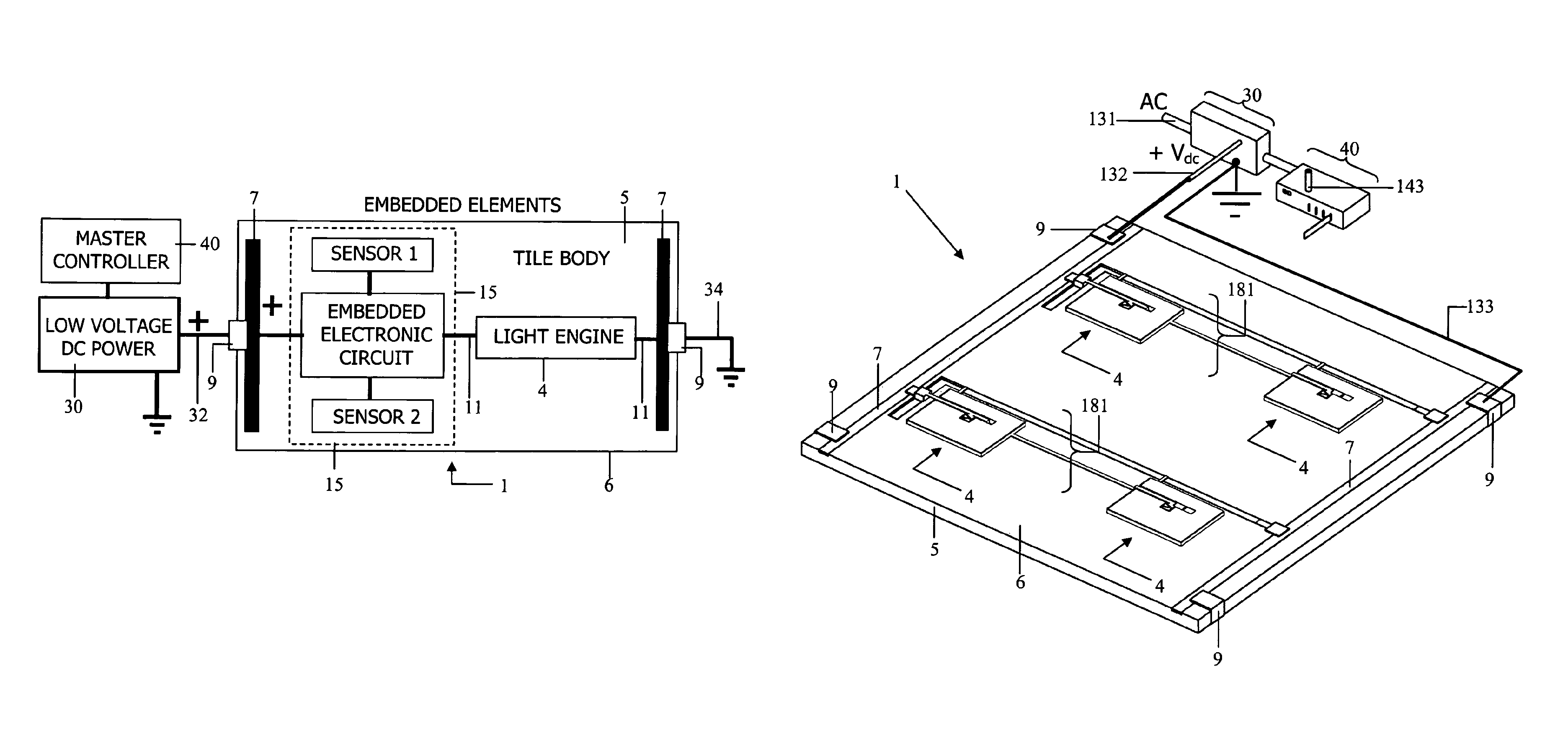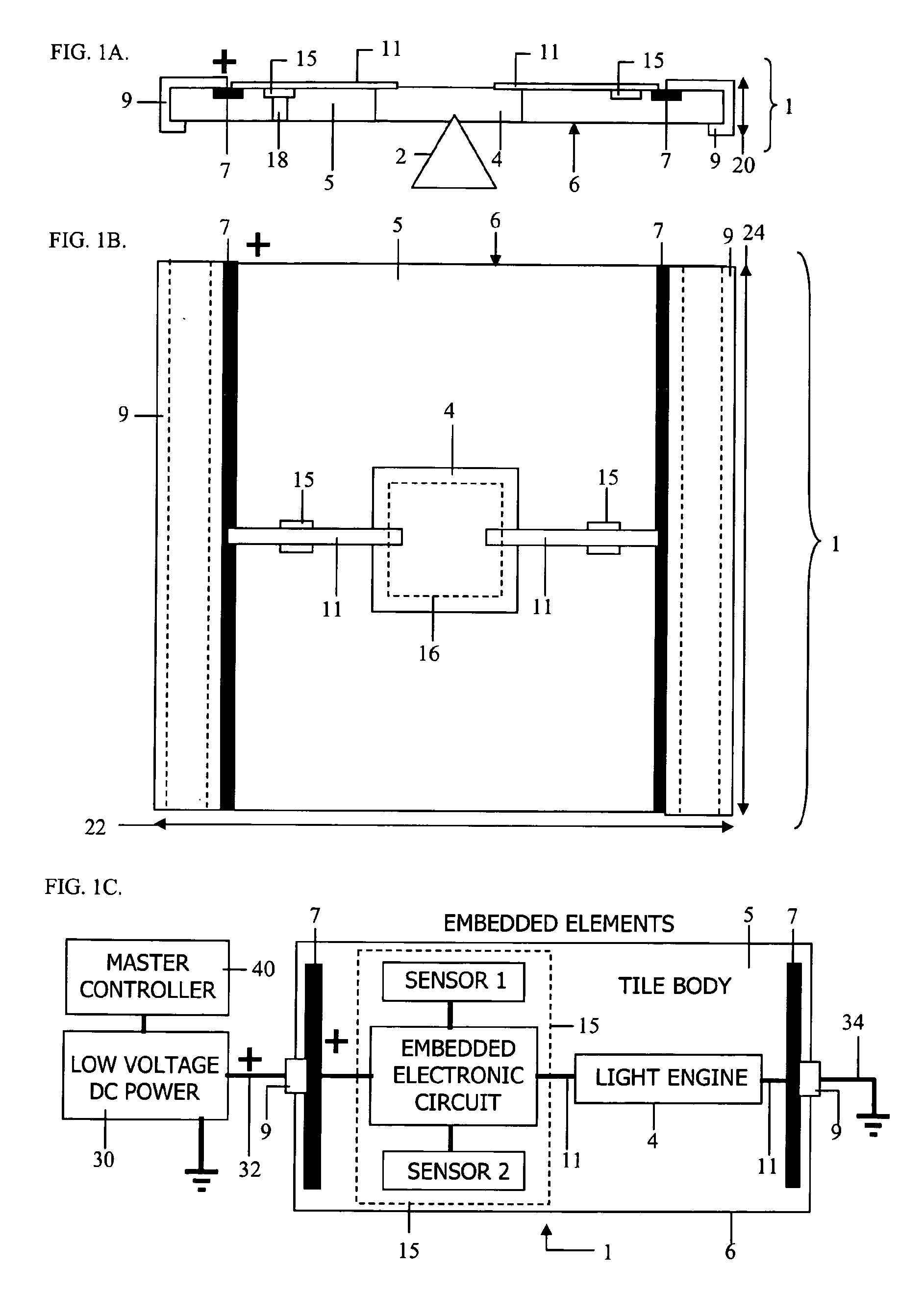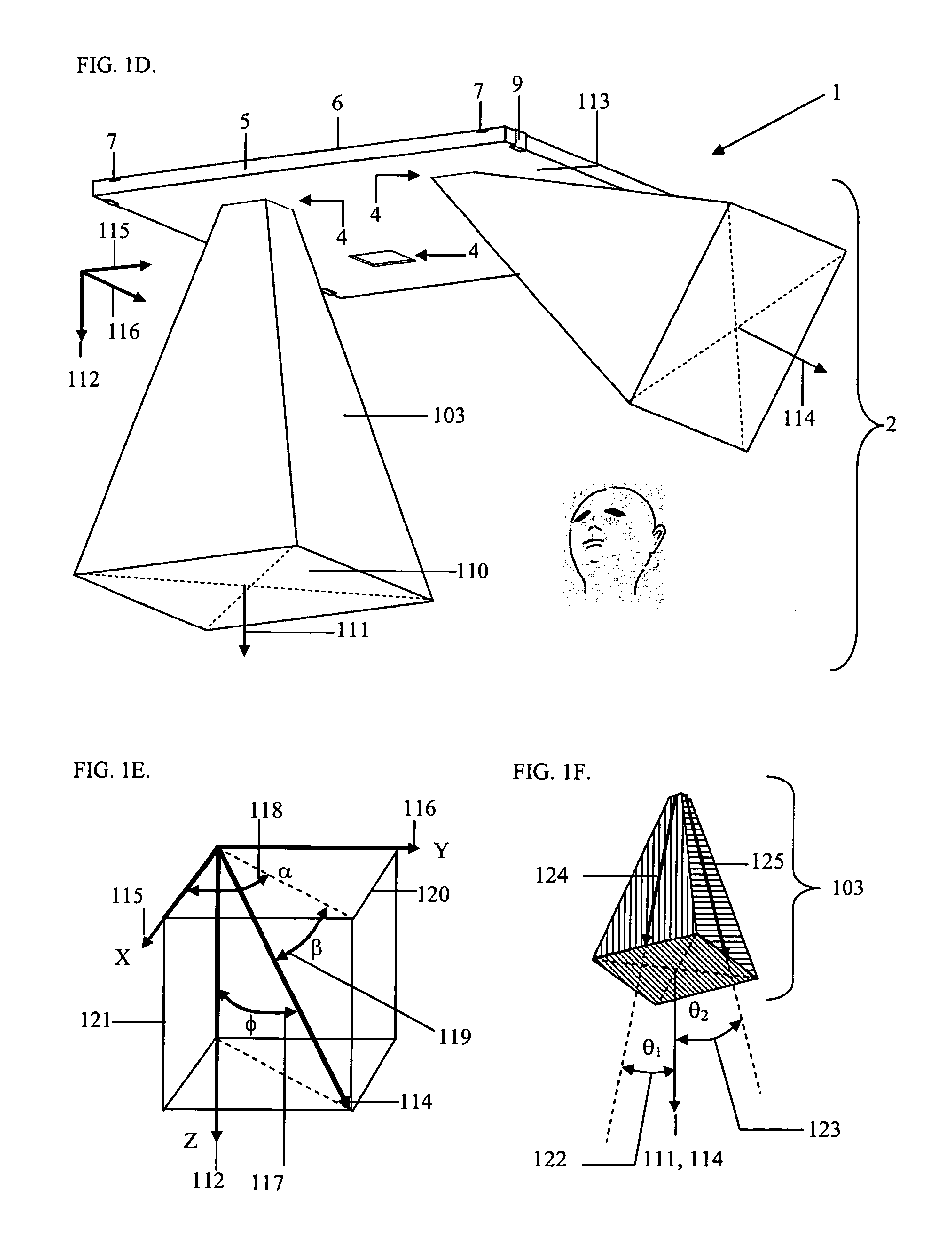Distributed illumination system
a distribution system and illumination technology, applied in the direction of lighting support devices, light source combinations, instruments, etc., can solve the problems of ineffective general application, inefficiency and inefficient dimming of conventional light bulb types in common practice, so as to improve the aesthetics of overhead lighting, the physical infrastructure of overhead lighting is significantly simplified, and the look and feel of overhead lighting systems around the world have not changed appreciably
- Summary
- Abstract
- Description
- Claims
- Application Information
AI Technical Summary
Benefits of technology
Problems solved by technology
Method used
Image
Examples
Embodiment Construction
[0225]An optical system 1 constructed in accordance with the distributed overhead illumination system invention is shown in a generalized side view, FIG. 1A, in a generalized top view, FIG. 1B, and in a generalized block diagram form of electrical circuit schematic, FIG. 1C. For purposes of scaling, the cross-sectional thickness 20 of system 1 in FIG. 1A may be visualized as being 0.75 inches, and the edge boundaries 22 and 24 of system 1 in FIG. 1B may be visualized as being 2 feet by 2 feet square. In general, thickness 20 may vary between 0.25 inches and 1.5 inches, and edge boundaries 22 and 24 may vary between about 1-foot and about 6-feet, with the nominal dimensional combinations 2 feet by 2 feet and 2 feet by 4 feet being most popular among commercial standards. Within this description, all of the examples illustratively describe 24″×24″ panel materials, most often referred to a “tile.” In addition, all of the ceiling illumination examples provided below anticipate use in su...
PUM
 Login to View More
Login to View More Abstract
Description
Claims
Application Information
 Login to View More
Login to View More - R&D
- Intellectual Property
- Life Sciences
- Materials
- Tech Scout
- Unparalleled Data Quality
- Higher Quality Content
- 60% Fewer Hallucinations
Browse by: Latest US Patents, China's latest patents, Technical Efficacy Thesaurus, Application Domain, Technology Topic, Popular Technical Reports.
© 2025 PatSnap. All rights reserved.Legal|Privacy policy|Modern Slavery Act Transparency Statement|Sitemap|About US| Contact US: help@patsnap.com



